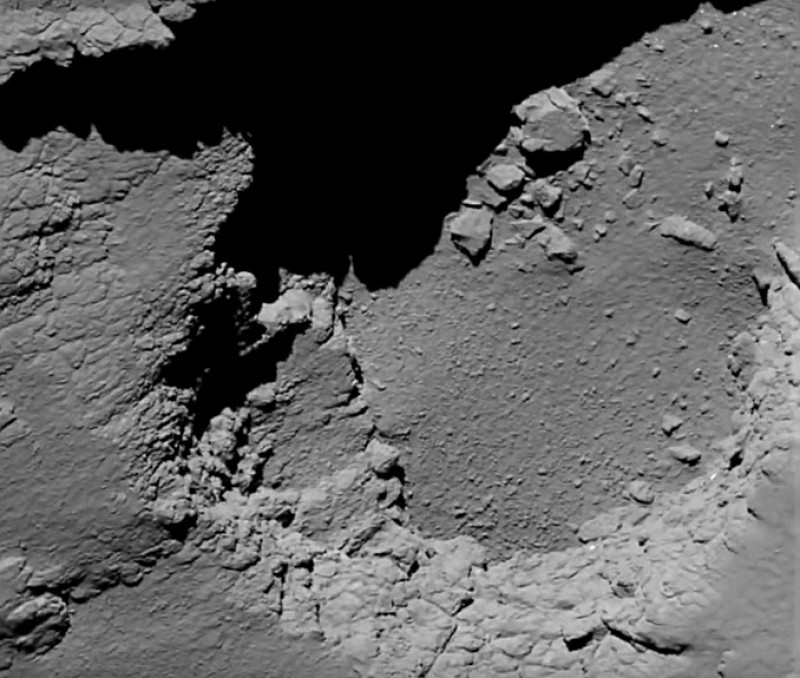
The European Space Agency has released a complete archive of imagery and data from the historic Rosetta mission, allowing armchair astronauts to relive the spacecraft’s thrilling final descent to the surface of comet 67P/Churyumov-Gerasimenko and the challenging search for the wayward Philae lander. It even includes a reconstructed final frame that wasn’t initially recognized as an image.
The final set of high-resolution images from the OSIRIS camera covers the period between July 2016 and end of mission on 30 September that years, pushing the total number of wide- and narrow-angle images to nearly 100,000 over the mission’s 12-year voyage.
“The final set of images supplements the rich treasure chest of data that the scientific community are already delving into in order to really understand this comet from all perspectives,” said Matt Taylor, ESA’s Rosetta project scientist. “There are certainly plenty of mysteries, and plenty still to discover.”
The video sequence below is a compilation of OSIRIS images taken during Rosetta’s final hours, falling closer and closer to 67P/Churyumov-Gerasimenko and capturing a view of its final resting place (credit: ESA/Rosetta/MPS for OSIRIS Team MPS/UPD/LAM/IAA/SSO/INTA/UPM/DASP/IDA)
Another set of images captures the hunt for Philae, would bounced and tumbled across the comet before coming to rest on its side against the base of a cliff in a boulder field. Near the left edge of the photo below, which illustrates how difficult it was to find the lander, one of Philae’s landing legs is barely visible peeking up from behind a boulder. Click the image to reveal its location.

“Having all the images finally archived to be shared with the world is a wonderful feeling,” Holger Sierks, OSIRIS principal investigator. “We are also pleased to announce that all OSIRIS images are now available under a Creative Commons license.”
As an added bonus, Sierks’ team discovered three packets of data that were part of a partial image, the last one Rosetta attempted to capture before setting down on the comet’s surface and ending science operations. The packets represented about half of a complete image but engineers were able to reconstruct a slightly blurred view showing a metre-wide view of the surface.
